Last updated on October 28th, 2022 at 03:07 pm
An Introduction to Bottle Gourd Plant (lauki)
Table of Contents
Before sharing details of Hydroponic Bottle Gourd in Cocopeat, Let’s read about Bottle Gourd plant in general. Bottle Gourd also known as Calabash and scientifically known as Lagenaria siceraria belongs to Cucurbitaceae (Cucumber family). In India it is popularly known as Lauki . It is a warm weather crop and optimum temperature for it’s growth is between 22-30 degrees Celsius. It can not tolerate cold or frost so always make sure you have at least 3-5 months of optimum temperature range (22-30 degrees) ahead with plenty of moisture in growing season.
Bottle Gourd grows very rapidly and for best results trellising and training is required for vines to grow vertically. It produces night blooming flowers and fruits have various shapes depending upon the variety.
Starting Bottle Gourd Seeds
Seeds are one of the most important factor in determining the germination success and yields later on. Therefore, it is always recommended to buy high quality bottle gourd seeds to ensure maximum germination whether it’s hydroponics or soil based gardening. I chose Sungro company’s F1 Hybrid Vidya seeds.
Bottle gourd seeds are quite thick and soaking them in water overnight helps in faster germination. Also, it’s a good test to see if seeds are viable or not. Faulty seeds tend to float at surface and good ones usually settle at the bottom of container
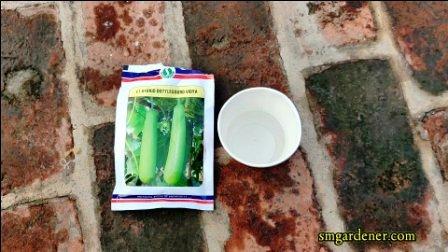
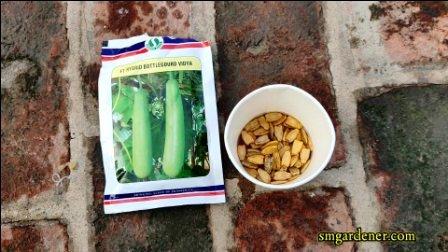
Growing Media
Choice of growing media depends upon how you are going to grow vegetables in Hydroponics. I am growing bottle gourd in a drain to waste system where nutrient solution is not recirculated and drainage is discarded off. Also, media availability and cost are important factors while choosing growing media
In India, cocopeat is very affordable and easily procurable growing media and hence I am going to go with cocopeat. Always make sure that your coco peat is washed thoroughly and preferably buffered. TDS of cocopeat should be below 250 ppm or even less. You can learn here how to wash cocopeat
I am going to grow bottle gourd in two grow bags and both grow bags will have slightly different growing mediums. Size of grow bags used here is 24x24x40 cms. In Hydroponics, grow bag/container size can be a bit smaller than soil based gardening. This is the minimum size for growing bottle gourd. A little bigger grow bag can be better.
One grow bag will have 100% cocopeat and the other will have 70% cocopeat and 30% perlite. Perlite is mixed in cocopeat to increase drainage and aeration. Perlite percentage can vary from 10% to 50%. Now, we need to fill growing media in both grow bags
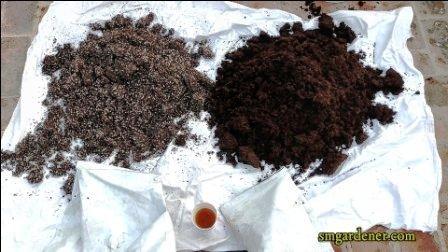
On Right : 100% Cocopeat

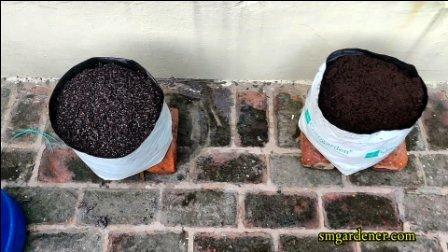
Preparation for seed sowing
For this particular grow I am going to sow seeds directly as opposed to raising seedlings and then transplanting later on. Gourds tend to do better if seeds are sown directly but you can raise seedlings if you want.
Before sowing seeds, I need to wet the media thoroughly because I am not going to water it right after seeds are sown. So, I am using water from my R.O. (Reverse Osmosis) to wet the media because we don’t need any nutrition to provide as seeds are yet to be sown so plain R.O. water is all we need and I will water grow bags using a watering can until drainage is seen from the bottom
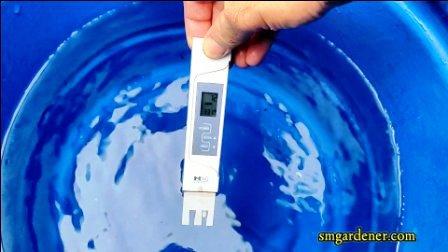
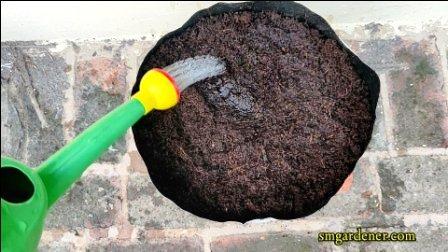
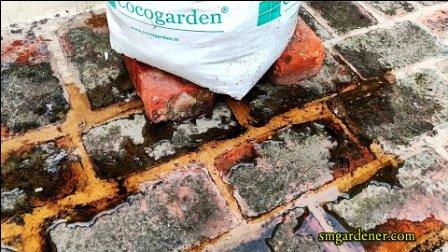
Seed Sowing
Now, since I am sowing seeds directly and not raising seedlings, I need to sow more than one seed per grow bag in case germination is poor, I’ll have more chances of having enough number of seedlings. First, I need to throw away the water seeds were soaked in
Now, I will make four holes in each grow bag and hole need not be more than 1 inch deep. One seed will be sown in each hole and total 4 seeds per grow bag. After sowing seeds, I will cover the seeds with same media, just enough to hide them and not bury them deep. Germination can be seen in 3-5 days of seed sowing.
After sowing seeds, grow bags should be placed under some kind of protection if it’s rainy season to protect seedlings from too much rain. Seeds were sown on July 17, 2021
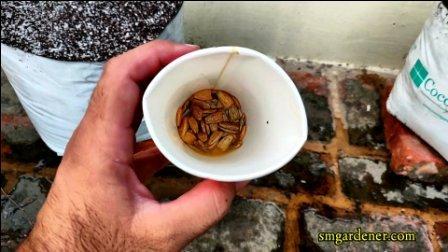
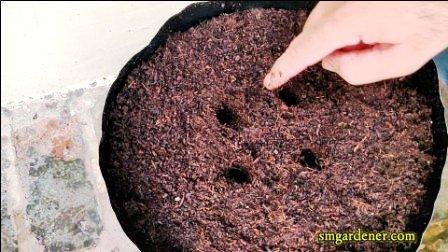
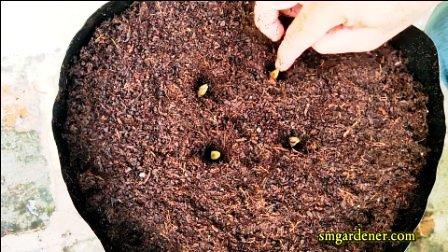
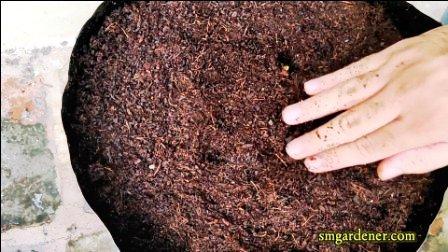
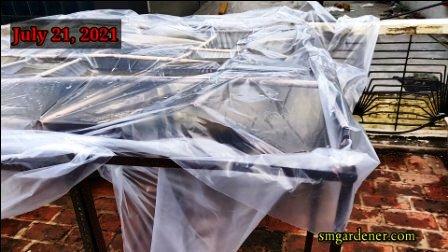
Germination and Growth Phase
On July 21, 2021, Germination was visible in both grow bags although not all seeds had germinated yet
On July 23, 2021, All four seeds germinated in grow bag with 100% cocopeat but only three seeds germinated in the grow bag with Coco-perlite mixture

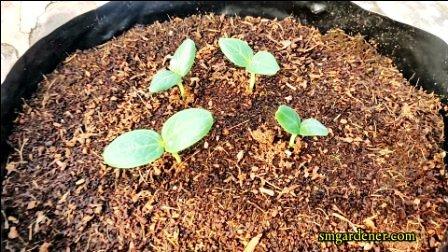
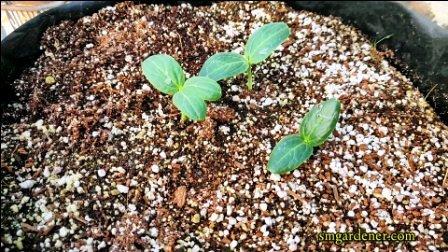
Hydroponic Nutrient Solution for Bottle Gourd (Lauki)
At this stage, I fed the seedlings with weak hydroponic nutrient solution. Since seedlings are very small, nutrient solution with TDS around 150-200 ppm is good and pH of nutrient solution should always be between 5.5 to 6.5
If you want to know which recipe I used to make hydroponic nutrient solution for growing bottle gourd, you can click on below video link to know about it
Also, there is another post which explain how to make DIY Hydroponic Nutrients for fruiting vegetables from scratch. You can check it out.
On July 25, 2021 seedlings started to grow their first true leaves and the first two leaves when seed germinated are not it’s true leaves. They are called cotyledons and they provide nutrition to seedlings for first few days until seedlings/plants start making their own food via photosynthesis
At this stage, I decided to thin the seedlings which means I kept one healthiest seedling in each grow bags and removed the others because only one plant could be grown in each grow bag


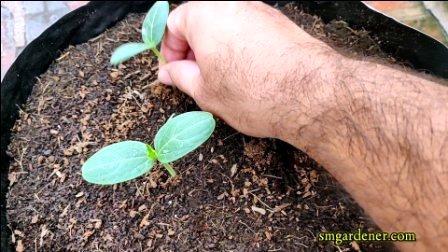
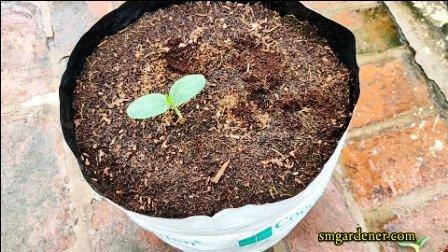
On July 28, seedlings were growing steadily and first true leaves were getting bigger. At this point, I increased the nutrient solution strength to around TDS 300 ppm. Also, there is no need to water whole grow bag thoroughly and only 200-300 millilitres of solution is enough as seedlings in the beginning don’t have large root system so any extra solution beside root mass area is of no use.
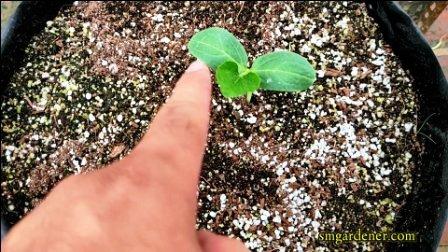
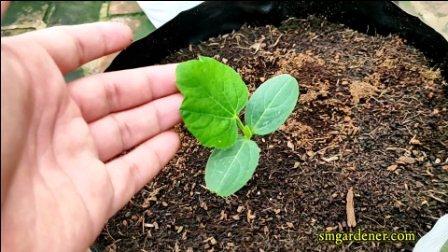
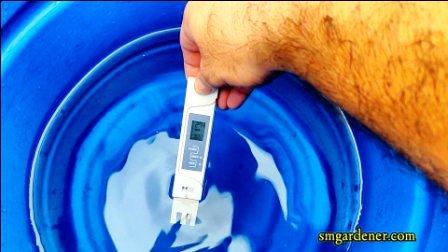
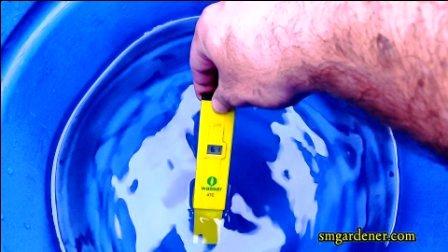
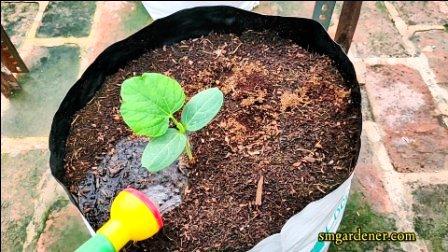
On August 1, 2021, Seedlings grew their second true leaves and somehow the seedling in 100% cocopeat is doing a bit better than the other
Nutrient solution strength needs to be increased to around 500 ppm and this time I am going to show you my stock solution with the help of which I make diluted hydroponic nutrient solution. I have plain R.O. water in a container with TDS around 13 ppm and stock solution is stored in 1 Litre plastic bottles with two part formulation, Stock solution “A” and stock solution “B”
Equal parts of stock solution A and B are required to be mixed with R.O. water to make diluted nutrient solution. In my case, stock solution is 100 times concentrated so I need 10 ml from each stock solution for every 1 Litre of R.O. water
If you wish to get training/consultation on how to make stock solution with raw fertilizers and get a deeper understanding of how hydroponic nutrients work then you can DM me on my Instagram i.e. sm.gardener OR you can WhatsApp me on my number +91-72062-34611
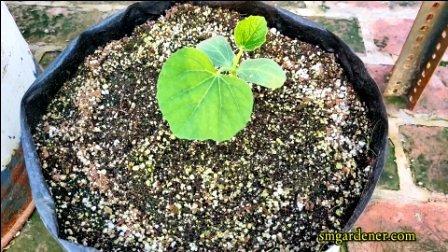
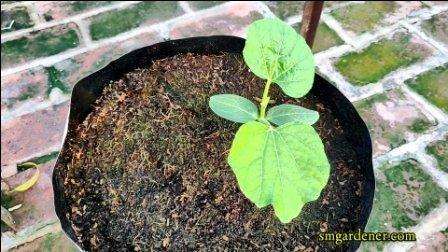
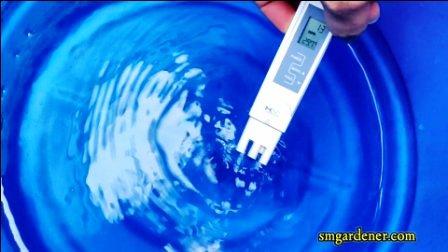
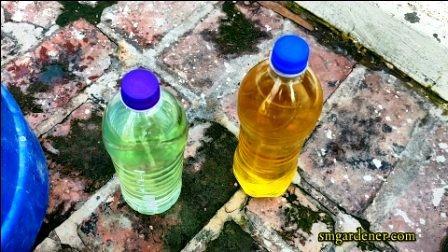
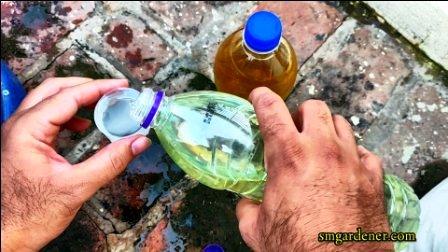
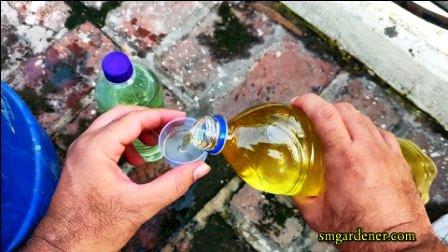
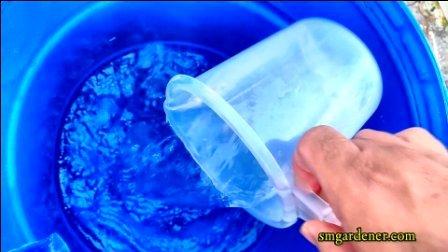
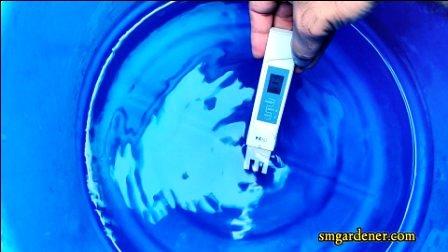
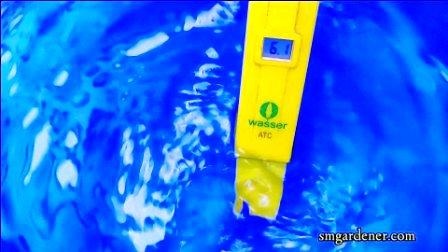

On August 6, 2021, Both grow bags were placed in open as they were now capable of tolerating conditions outside of the protected area. Both plants are growing nicely and nutrient solution strength needs to be increased a bit here. I am going to increase it by 100 ppm. Previously , I aimed for 500 ppm and achieved 470 ppm and now I intend to increase 100 ppm, so TDS needs too be around 570 ppm
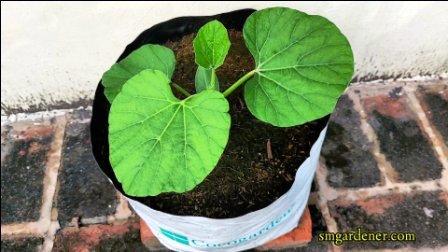

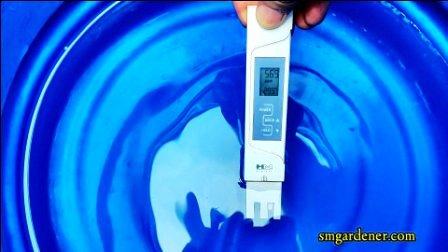
On August 19, 2021, plant in 100% cocopeat is growing really well and flower buds are starting to develop at this stage. Unfortunately, plant in cocopeat-perlite mixture has been affected by virus and needs to be separated from the garden in order to prevent virus spread to other plants. There was a thrips and white flies attack on this plant and although it was in early stage and I took required measures but still the plant couldn’t be saved.
At this stage, Nutrient solution strength needs to be increased to 700 ppm
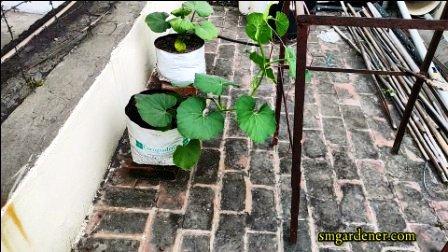
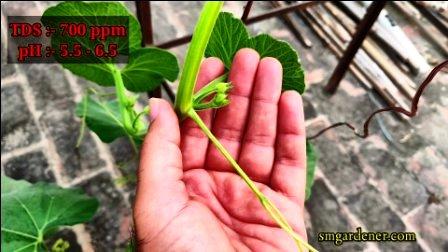
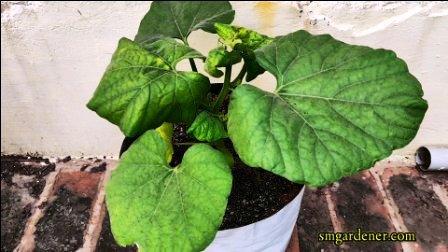
Flowering and Fruiting Phase
August 30, 2021, Bottle gourd plant (lauki) is doing great and new branches are coming out. I have made a trellis system using bamboo sticks and vines will be supported on these sticks.
Now, female flowers are starting to bloom on the plant and there is also some male flowers appearing. Female flowers have tiny bottle gourd at their base while male flowers don’t have anything around their base
Flower drop or fruit falling is a common problem in vegetable plants and bottle gourd is a little more difficult to pollinate as flowers bloom at night. Also, natural pollinators like honey bees, etc. are not in enough numbers in my garden so I need to hand pollinate bottle gourd flowers in order to achieve maximum yield.
Strength of nutrient solution is being increased to 900 ppm and pH between 5.5-6.5 at this stage
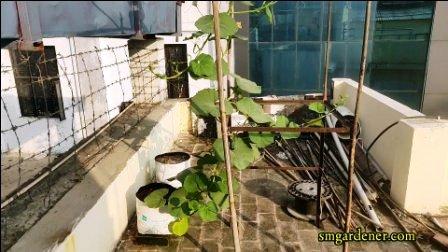
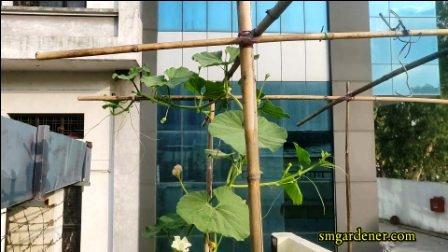

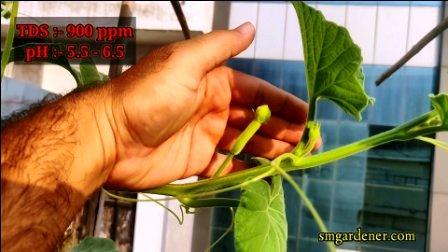
September 7, 2021, It seems hand pollination was successful and I have my first bottle gourd to be harvested today.
TDS of nutrient solution needs to be at maximum strength now as flowering and fruiting is going to be at full force in coming days so the plant needs good nutrition
Maximum Nutrient solution strength is going to be around 1100 ppm in my case but it can be between 1100-1300 ppm depending upon TDS of your R.O. water & pH between 5.5-6.5
Harvesting Phase
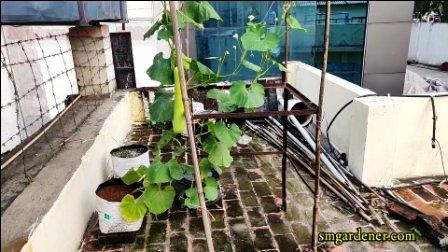

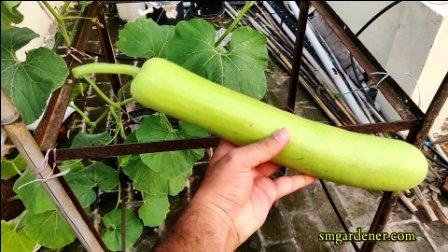
September 12, 2021, There’s a lots of female flowers now visible on plant and if hand pollination is successful then there will lots of bottle gourd. Overall plant growth is really good and branches are growing very rapidly
Nutrient solution is being fed full strength at TDS 1100 ppm & pH between 5.5-6.5

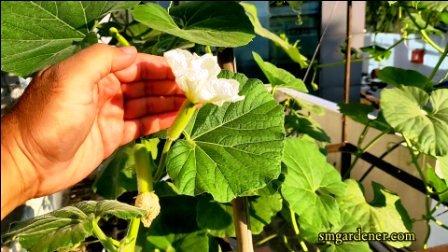
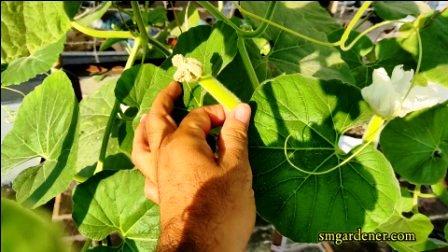
September 20, 2021 Today we are going to harvest a couple of bottle gourds as they are ready to be harvested while others will take a day or two attain better size to be harvested

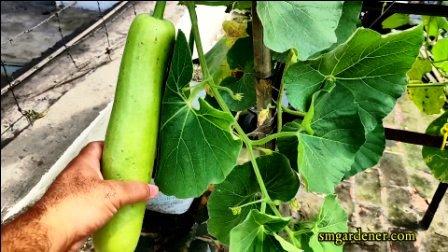

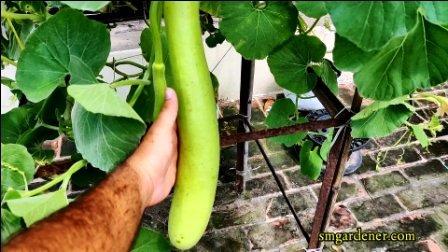

If you have any questions or comments regarding growing Hydroponic Bottle gourd, you may leave a comment in the comment section. I will try me level best to answer them as soon as possible.
You can also watch my video where I have explained the whole process of growing Bottle gourds in coco peat using hydroponic nutrients. Just click on below link to watch the video on YouTube
You can also watch this video in English on my Instagram by clicking below link
https://www.instagram.com/tv/CULVgBUBnDh/?utm_source=ig_web_copy_link
FAQs
Can we grow Bottle Gourd in Hydroponics?
Absolutely. Bottle Gourd can be grown in Hydroponics very efficiently. Some of the best systems and techniques for growing Hydroponic Bottle Gourd are Deep Water Culture (DWC), Dutch Buckets, Kratky, etc.
How long does it take for Bottle Gourd to bear fruit?
It takes approximately 55-65 days from the date of seed sowing for bottle gourd (lauki) plants to bear fruit
Which Fertilizer is best for Bottle Gourd?
Since Bottle gourd is a vining and fruiting plant, a fertilizer rich in both Nitrogen and Potassium is a good option
What should be TDS for Hydroponic Bottle Gourd?
TDS for bottle gourd should be between 1200-1800 ppm at maturity. TDS levels can be adjusted according to plant age
Does Bottle Gourd need full sun?
Yes. Bottle Gourd is a fruiting plant and it performs well in full day of sunlight. Although, it can be grown in 4-5 hours of sunlight
How often should I water/feed Hydroponic Bottle Gourd in Cocopeat?
It depends on plant age and container/grow bag size. If plant is small, you can get away with watering once a day or even once in two days. As the plant grows, feed/water frequency needs to be increased and it can be up to two times a day
What should be the pH of Hydroponic Nutrient Solution for Bottle Gourd?
pH of hydroponic nutrient solution is always to be kept between 5.5 and 6.5 . For best results, aim between 5.8 and 6.2
Should I do 3G cutting / pruning in Lauki plants?
There is no need to prune or do 3G cutting in Bottle gourd as it has not proven to be a successful method of increasing yields in Bottle gourd. In fact, excessive pruning may lead to yield loss in Lauki (Bottle Gourd)
How can you tell if a Bottle Gourd flower is a male or female?
Female flowers of Bottle Gourd have tiny fruit/bottle gourd forming at their base while male flowers don’t have any sort of tiny fruit at their base
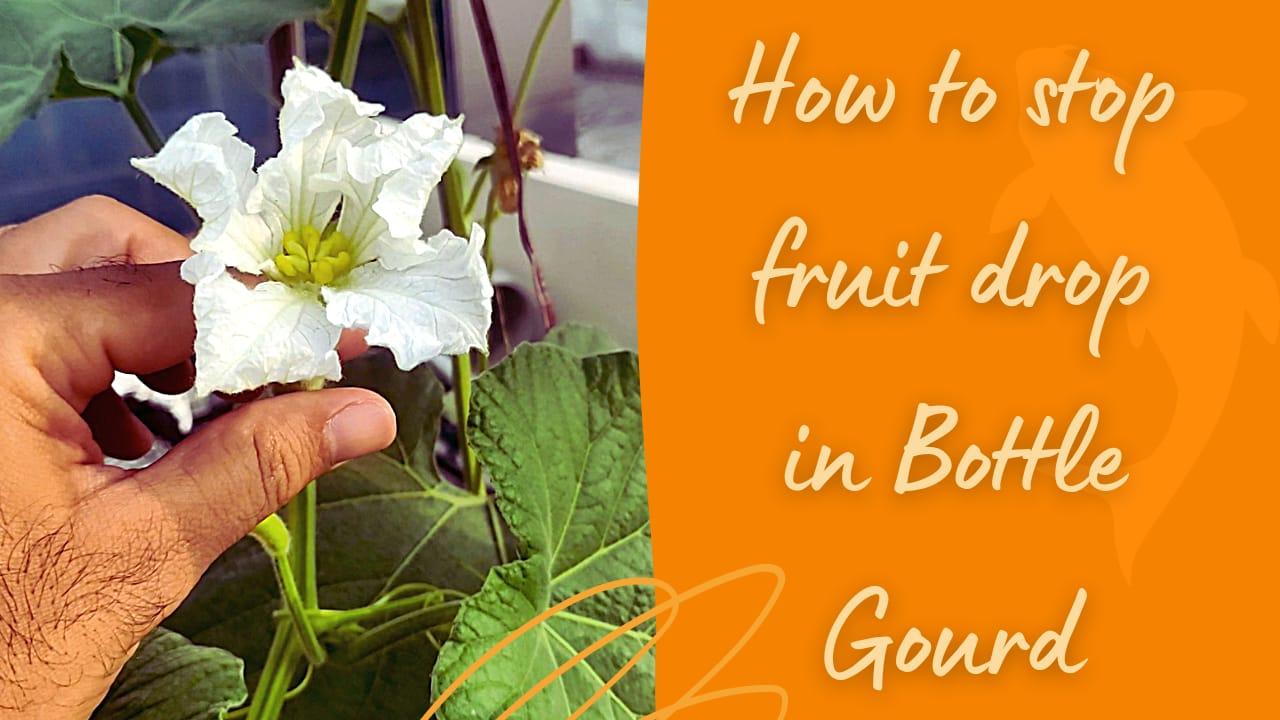
2 Comments
Amit · March 28, 2022 at 7:54 pm
Very informative. I can see your hard work and dedication. I need to connect with you over phone. Kindly reply with your contact details.
SMgardener · March 29, 2022 at 3:37 pm
You can WhatsApp on 72062-34611